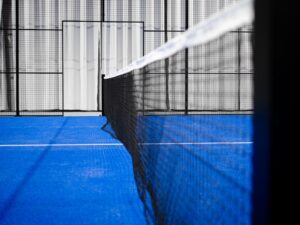Get a Grip on Padel Serve Rules with This Expert Guide
3 min read
Get a Grip on Padel Serve Rules with This Expert Guide
Are you ready to dive into the intense and exhilarating world of padel? Well, before you step onto the court and show off your skills, it’s essential to understand the ins and outs of the game, including the padel serve rules. But hold your horses! Don’t let the word “rules” intimidate you. Padel is all about having fun, so let’s break it down in an engaging and human way—just like a conversation with your friendly local padel expert.
Understanding the Basics
First things first—let’s talk about what exactly a padel serve is. If you’re familiar with tennis, you’ll notice some similarities. In padel, the server hits the ball from behind the baseline, diagonally towards the opponent’s service box. However, in padel, there are a few crucial differences that give the game its unique charm and challenge.
The Serve Sequence
The server gets two attempts to make a successful serve. If the first serve goes out or doesn’t meet the padel serve rules, the player gets a second chance. It’s always good to have a backup plan, right?
The Serve Must-Haves
Now, let’s dive into the essential elements of a valid padel serve:
- Underhand Serve: Unlike tennis, a padel serve must be executed underhand. No fancy overhead smashes here. This rule gives the game a distinct flavor and ensures a fair playfield for everyone.
- Ball Contact: When serving, you must hit the ball below your waist. There’s no room for towering high balls that might give you an unfair advantage. Keep it low and controlled.
- Service Box: The ball must land within the opponent’s service box diagonally across from where you’re serving. Think of it as drawing an imaginary line from the middle of your baseline to the edge of the opponent’s service box. Your serve has to touch down within those borders.
- No Court Violation: It’s essential to ensure your feet don’t step on or cross the service box lines while serving. This rule helps maintain fairness and prevents any sneaky moves that could throw off your opponent.
The Bounce Rule
Now, here’s where things get really interesting. Unlike tennis or most racket sports, the ball in padel must bounce before your opponent hits it. You might be thinking, “What? That’s crazy!” But trust me, it adds an extra level of strategy and excitement to the game. This rule ensures a longer rally and creates more opportunities for thrilling exchanges at the net. So embrace the bounce rule—it’s what makes padel so unique!
Faults and Foot Faults
Remember that a fault occurs if you violate any of the padel serve rules discussed earlier. Common faults include hitting the ball too high, having the ball land outside the service box, or stepping on or crossing the service box lines. If you commit a fault, your opponent scores a point.
On the other hand, a foot fault happens when the server’s foot crosses the line before the ball is struck. This violation results in an instant fault, meaning your opponent earns a point without even having to return the serve. So, keep your feet in check to avoid giving away freebies!
Practice Makes Perfect
Now that you’ve got a good grip on the padel serve rules, it’s time to hit the court and put your newfound knowledge into practice. Remember, learning padel is a journey, and it’s perfectly okay to make mistakes along the way. The key is to keep improving, have fun, and enjoy the incredible world of padel!
So, grab your racket, call up your friends, and get ready to serve up some fantastic padel action. With your new expertise in padel serve rules, you’ll be racking up points and having a blast in no time. Enjoy the game and let your padel adventure begin!







